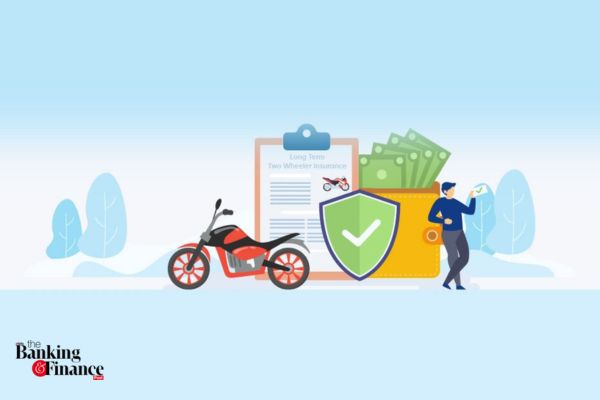Bike insurance is essential for any rider, offering protection for both the vehicle and the rider against accidents and other unforeseen events. However, finding the right bike insurance that provides adequate coverage without breaking the bank can be challenging. Here are some practical tips to help you save money on your bike insurance without sacrificing the coverage you need.
1. Compare Insurance Policies
The first step in saving money on bike insurance is to compare different policies available in the market. Don’t just go for the first policy you come across. By comparing policies, you can find bike insurance offers that provide the best value for your money. Look for policies that offer comprehensive coverage, including third-party bike insurance, at competitive prices. Online platforms can make this process easier, allowing you to quickly compare different plans and even find discounts on two-wheeler insurance.
2. Skip Making Small Claims
It might seem counterintuitive, but avoiding claims for small repairs can help reduce your premium in the long run. Every time you make a claim, it affects your no-claim bonus (NCB). The NCB is a discount that you receive on your premium for every year you don’t make a claim. Over time, this discount can significantly reduce your insurance costs. Weigh the cost of small repairs against the potential savings from a higher NCB before deciding to file a claim.
3. Avoid Unnecessary Add-ons
Comprehensive bike insurance plans often come with the option to add extra coverage, known as add-ons, for an additional premium. While some add-ons are useful, others may not provide significant benefits for your situation. Carefully review the add-ons available and select only those that offer real value. By avoiding unnecessary add-ons, you can keep your premium lower without compromising essential coverage.
4. Renew Your Policy on Time
Timely renewal of your bike insurance policy is crucial. If you let your policy lapse, you could lose out on benefits such as the no-claim bonus, which can only be carried forward if you renew within a certain period. Additionally, renewing on time ensures continuous coverage, protecting you from any liabilities that may arise during a period when you’re uninsured. Always mark your calendar or set reminders for the renewal date to avoid lapses.
5. Opt for a Voluntary Deductible
A voluntary deductible is an amount you agree to pay out-of-pocket before your insurance kicks in during a claim. By opting for a higher voluntary deductible, you can lower your premium. However, be mindful that this means you’ll need to pay more out of pocket if you have an accident. Choose a deductible amount that balances your ability to save on premiums with your capacity to pay in the event of a claim.
6. Install Anti-Theft Devices
Installing approved anti-theft devices on your bike can reduce your insurance premium. These devices decrease the risk of theft, which in turn lowers the risk for the insurer. Make sure any devices you install are approved by the Automotive Research Association of India (ARAI) to qualify for this discount. This not only enhances the security of your bike but also helps you save on insurance costs.
7. Take Advantage of No-Claim Bonus
The no-claim bonus (NCB) is one of the most effective ways to reduce your bike insurance premium. If you don’t make any claims during the policy period, you can earn a discount on your renewal premium. This discount increases with each consecutive claim-free year. Even if you switch insurers, you can transfer your NCB to the new policy. Always check the NCB benefits when renewing or switching your policy to maximise your savings.
8. Choose the Right Coverage
While it’s tempting to choose the cheapest policy, it’s important to ensure you have adequate coverage. Basic third-party bike insurance is mandatory and covers you against liabilities to third parties in the event of an accident. However, it doesn’t cover damages to your own bike or personal injuries. Consider a comprehensive policy that includes own damage cover and personal accident cover for complete protection. A slightly higher premium can save you significant costs in the event of an accident.
9. Review Your Policy Regularly
Insurance needs can change over time, so it’s important to review your policy regularly. As your bike ages, you might decide that some coverages or add-ons are no longer necessary. Periodically reassessing your insurance needs and adjusting your policy accordingly can help you avoid paying for unnecessary coverage.
Saving money on bike insurance doesn’t have to mean sacrificing coverage. By following these tips, you can find a policy that provides the protection you need at a price you can afford. Additionally, maintain a clean driving record, consider bundling your policies, pay annually if possible, and review your policy regularly. With these strategies, you can enjoy peace of mind knowing that you and your bike are well-protected without overpaying for insurance.
*Standard T&C apply:
Insurance is the subject matter of solicitation. For more details on benefits, exclusions, limitations, terms, and conditions, please read the sales brochure/policy wording carefully before concluding a sale.
*Claims are subject to terms and conditions set forth under the motor insurance policy.
*Disclaimer: The content on this page is generic and shared only for informational and explanatory purposes. It is based on several secondary sources on the internet and is subject to changes. Please consult an expert before making any related decisions.
Elets The Banking and Finance Post Magazine has carved out a niche for itself in the crowded market with exclusive & unique content. Get in-depth insights on trend-setting innovations & transformation in the BFSI sector. Best offers for Print + Digital issues! Subscribe here➔ www.eletsonline.com/subscription/















